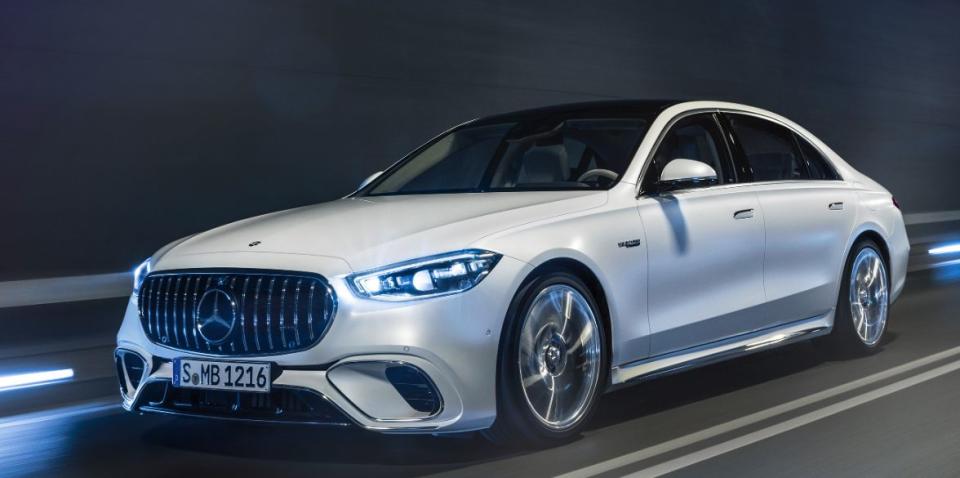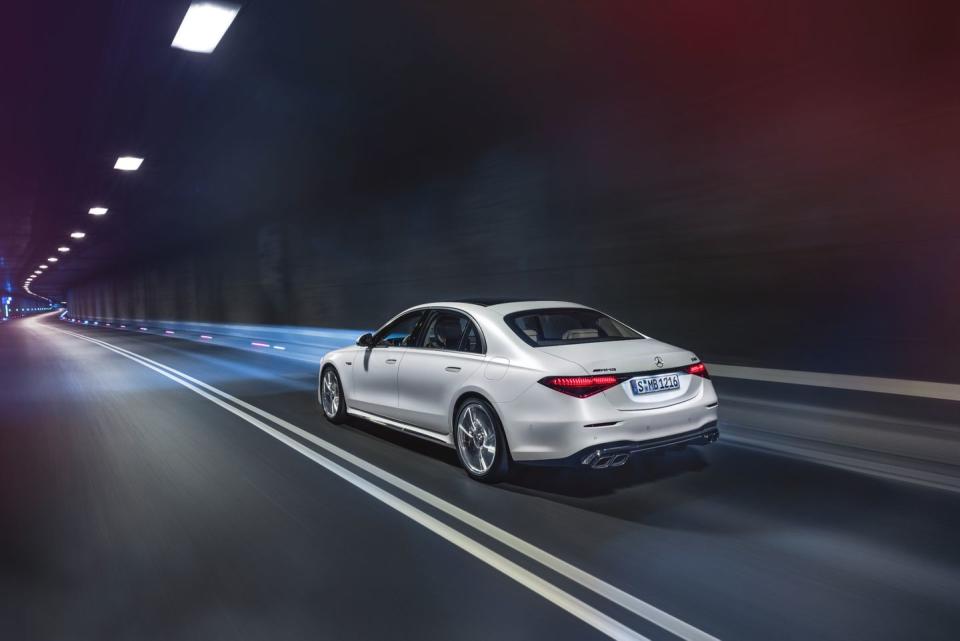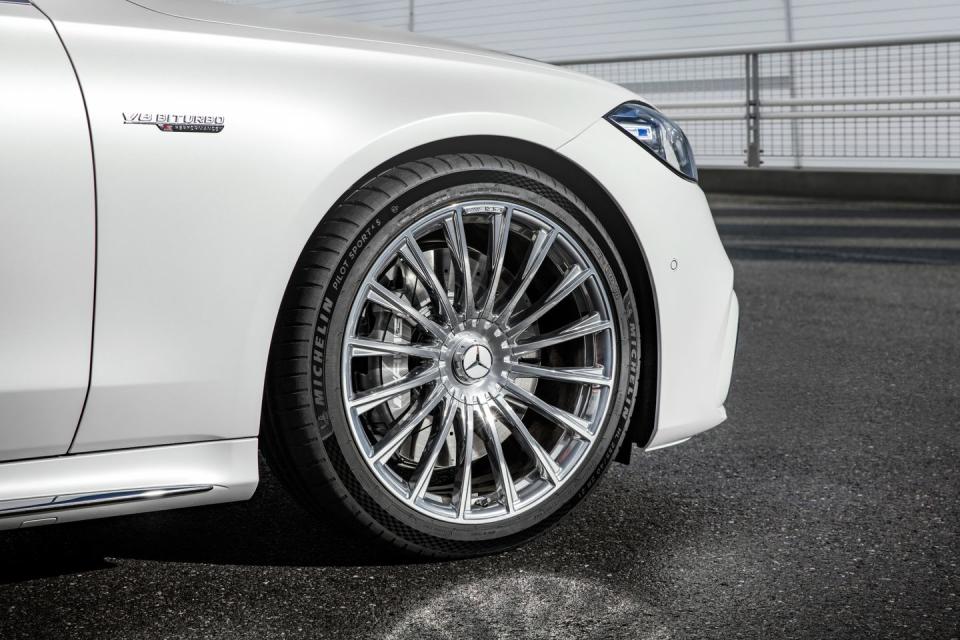2023 Mercedes-AMG S 63 E Performance Boasts 791 Electrified Horsepower

Mercedes-AMG isn't ditching its V8 engines yet, but it is focusing on electrification as a core tenant of its performance plan, as exampled by the new 2023 Mercedes-AMG S 63 E Performance.
Building on the bread-and-butter AMG twin-turbo 4.0-liter V8, the S 63 E will have a 188-hp rear-axle electric motor powered by a 13.1-kWh battery, allowing for peak power numbers of 791 hp and 1055 lb-ft of torque.
The P3 hybrid system also accounts for updates to the handling and braking dynamics, with stages of regenerative braking and e-motor torque vectoring as well as rear-wheel steering.
Mercedes-Benz is a luxury manufacturer by and large, even with more affordable models like the A-Class added to the mix. But one of Stuttgart's alphabetized model lineups stands above the rest—the big body S-Class sedan. With the exception of Maybach-branded units, the S-class is regarded as the benchmark model for the cushioned, silent kind of cabin that VIP passengers require. Make no mistake, however, that the S-class is a stout performer, especially when AMG gets involved.
And that's exactly what is happening for the 2023 model year, with the launch of the new Mercedes-AMG S 63 E Performance. The last time we saw the S 63 was in 2021 when the C217 coupe and convertible chassis were powered by a twin-turbocharged 4.0-liter V8. Nearly three years later, the S 63 nameplate has been remodeled as a four-door sedan, with an electrified version of the same twin-turbocharged 4.0-liter V8.

At its peak, the new P3 hybrid powertrain is good for 791 hp and 1055 lb-ft of torque, but it's more than whopping power figures that make this powertrain interesting. New for the 2023 model year, Mercedes-AMG has bolted a permanently excited synchronous 188-hp electric motor to the rear axle and worked a 13.1-kWh battery into the drivetrain, allowing the S 63 E Performance to take advantage of immediate torque off the line.
The electric motor is run independently of the V8 engine and traditional nine-speed multi-clutch transmission thanks to an electrically shifted two-speed transmission, though the pair of transmissions work together in the event of rear-axle slip to send power to the front wheels. The geared design of the electric motor is tailored for supplementary power delivery across the power range of the ICE engine, shifting into its second gear at 87 mph to fill in for gaps in turbocharged boost. Paired with the variable AMG Performance 4MATIC+ all-wheel drive, the model can sprint from o-60 mph in 3.2 seconds, eventually reaching its electronically limited top speed of 180 mph.

Based on the previous high-performance battery (HPB 80), the new 13.1-kWh lithium-ion battery represents over double the battery capacity of its predecessor. This increase allows for an additional bump in power, with a continuous output of 94 hp. For context, the peak horsepower of the new S 63 E Performance is 791 hp, but the continuously available number will be closer to 697 hp. Both the peak and continuous power figures are significant in and of themselves, but the specific battery design is also made to aid in the longevity of the model.
Mercedes says the battery is positioned over the rear axle to more evenly distribute weight across the 17.5-foot sedan, with the company claiming some basis in Formula 1 technology. To keep this system cool, Mercedes has developed a proprietary coolant based on an electrically non-conductive liquid that flows over all of the 1200 cells, with the model carrying around 3.7 gallons and a special electric pump to distribute the fluid. As a result, the battery should stay within an average operating temperature of 113 degrees Fahrenheit, increasing the lifetime and performance of the battery.

 Yahoo Autos
Yahoo Autos 